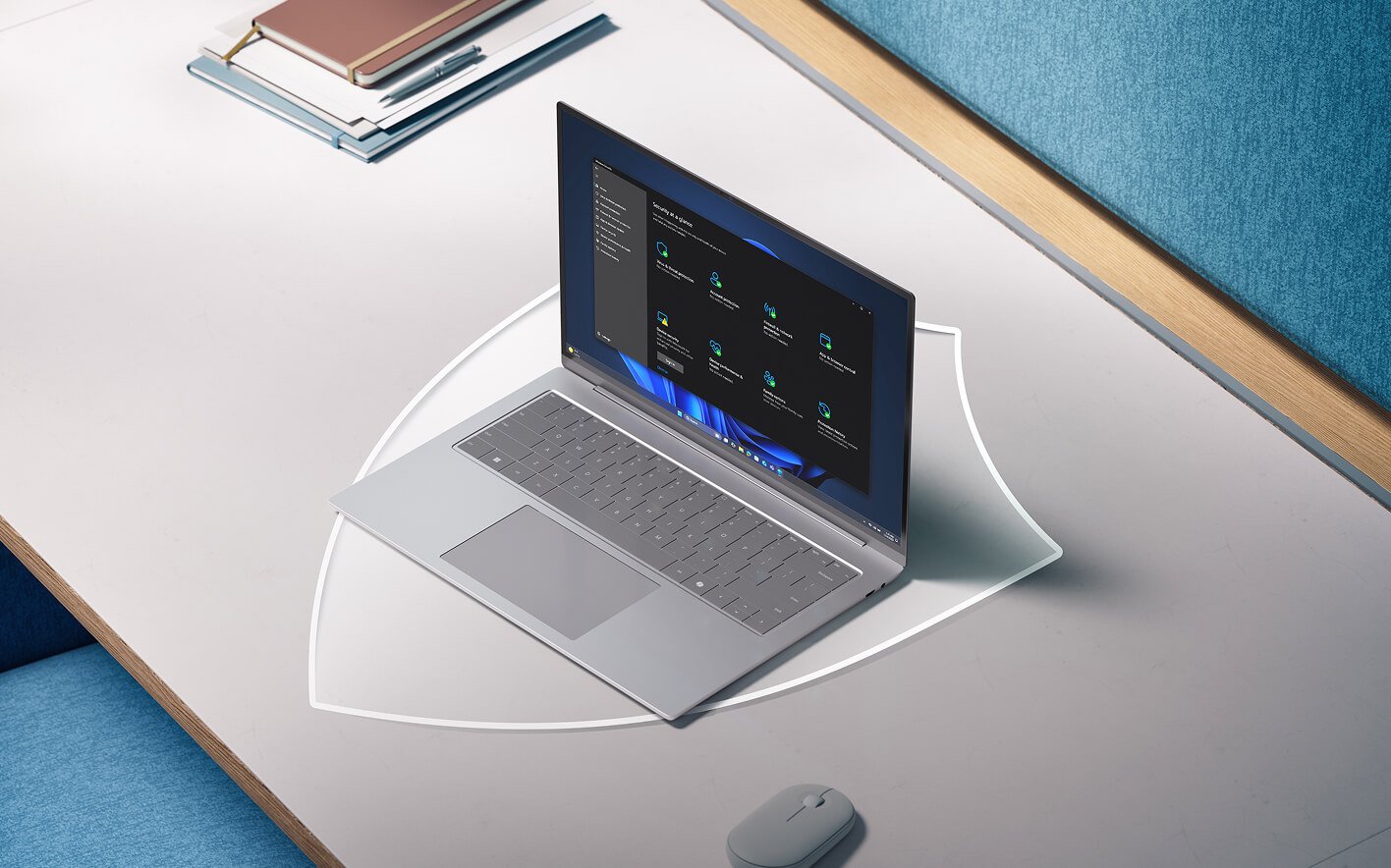Top Cyber Security Solutions for Businesses
Businesses today face a growing number of cyber threats. These threats can lead to data breaches and financial losses.
7 min read
 Adrian Ghira
:
Jul 22, 2025 12:00:00 AM
Adrian Ghira
:
Jul 22, 2025 12:00:00 AM

Stop believing that cybercriminals only target large corporations with sophisticated IT departments. Last month, I received three separate calls from small Canadian businesses - a dental practice in Calgary, a law firm in Toronto, and a manufacturing company in Edmonton - all victims of the same phishing campaign that had bypassed their basic security measures and compromised their networks within hours.
These weren't random attacks. They were carefully crafted campaigns targeting small and medium-sized businesses specifically because cybercriminals know that SMBs often lack the comprehensive security infrastructure that larger organizations deploy. The attackers understood exactly what they were looking for: businesses with valuable data, limited security budgets, and overworked IT resources.
Network security solutions for SMBs must address the reality that modern cyber threats specifically target smaller organizations through sophisticated phishing attacks, advanced malware campaigns, and social engineering tactics designed to exploit resource constraints. Generic security products don't account for the unique operational challenges that SMBs face - limited IT staff, tight budgets, and the need for security measures that support rather than hinder business growth.
What makes this particularly challenging is that the most effective attacks don't look like attacks at all. They arrive as seemingly legitimate emails from trusted partners, invoices from known vendors, or urgent requests from executive teams. By the time businesses realize they've been compromised, attackers have often established persistent access to networks, exfiltrated sensitive data, and created backdoors for future exploitation.
The businesses that successfully defend against these threats understand that network protection requires layered security solutions specifically designed for their operational environment. They implement technology that scales with their growth, policies that their teams can actually follow, and response procedures that minimize business disruption when incidents occur.
I've spent the last fifteen years helping Canadian SMBs implement network security solutions that actually work in real-world environments. The organizations that avoid becoming cybercrime statistics share one critical characteristic: they treat security as a business enabler rather than a compliance burden, choosing solutions that strengthen their operations while protecting against evolving threats.
Small and medium-sized businesses face a fundamentally different threat environment than enterprise organizations, yet most security solutions are designed with large corporate networks in mind. This mismatch creates vulnerabilities that cybercriminals actively exploit through targeted campaigns designed specifically for smaller organizations.
Phishing attacks against SMBs have evolved far beyond generic spam emails requesting bank account information. Modern phishing campaigns use business email compromise techniques, vendor impersonation, and social engineering tactics that exploit the close-knit relationships common in smaller organizations. When attackers research your company's vendors, partners, and internal communications patterns, they can craft messages that even security-aware employees find convincing.
The statistics reveal the scope of this challenge. Over 90% of successful cyberattacks begin with phishing emails, and SMBs experience successful phishing attempts at rates significantly higher than larger organizations. This isn't because SMB employees are less intelligent or less careful - it's because they often lack the comprehensive security awareness training and technical controls that enterprise organizations deploy.
Malware threats have similarly adapted to target SMB environments with techniques designed to evade basic antivirus software and exploit common SMB technology configurations. Advanced malware uses living-off-the-land techniques that leverage legitimate system tools to avoid detection, polymorphic code that changes its signature to bypass traditional security scans, and persistence mechanisms that survive system reboots and security updates.
Ransomware represents a particularly serious threat for SMBs because attackers know that smaller organizations often lack the comprehensive backup systems and incident response capabilities needed to recover quickly from encryption attacks. The average ransomware payment for SMBs has increased by over 200% in the past two years, reflecting both the growing sophistication of attacks and the limited response options available to smaller organizations.
Network security technology must address the resource constraints that SMBs face while providing enterprise-level protection against sophisticated threats. This requires solutions that operate effectively with limited IT staff, integrate seamlessly with existing business applications, and provide clear visibility into security status without requiring specialized security expertise to interpret.
The compliance requirements that many SMBs face add another layer of complexity to their security challenges. Healthcare practices must maintain HIPAA compliance, financial services firms need SOX controls, and professional services organizations often must meet client security standards. These requirements demand specific security controls and documentation that generic security products don't address.
Cybersecurity solutions for SMBs must also account for the operational realities of smaller organizations: employees who wear multiple hats, technology budgets that require careful ROI justification, and business processes that can't accommodate the complex security procedures that larger organizations implement. Security solutions that interfere with productivity or require extensive training often create more problems than they solve.
Effective network security solutions integrate multiple protection layers that work together to defend against the full spectrum of cyber threats while supporting SMB operational requirements. Rather than relying on individual security tools, successful SMBs implement coordinated security architectures that provide comprehensive protection without overwhelming their technical resources.
Email security solutions designed for SMBs must go far beyond basic spam filtering to address sophisticated business email compromise attacks and targeted phishing campaigns. Modern email security platforms use artificial intelligence to analyze communication patterns, sender reputation, and message content to identify threats that traditional filtering systems miss.
Comprehensive email protection includes:
One of our Calgary clients discovered the value of advanced email security when our system blocked a sophisticated vendor impersonation attack that their previous solution had allowed through. The malicious email perfectly mimicked their accounting software vendor's branding and included a link to a credential harvesting site that would have compromised their financial systems.
Endpoint security solutions must protect against advanced malware, zero-day exploits, and living-off-the-land attacks that traditional antivirus software cannot detect. Modern endpoint protection platforms use behavioral analysis, machine learning, and threat intelligence to identify malicious activities regardless of whether specific malware signatures are known.
Advanced endpoint protection provides:
I've seen behavioral endpoint protection prevent major incidents by detecting malware that had been specifically designed to evade signature-based detection. In one case, our system identified a legitimate business application that had been modified to include data exfiltration capabilities - something that traditional antivirus software would never have caught.
Network protection solutions provide the visibility and rapid response capabilities needed to detect threats that have bypassed perimeter security controls. Modern network monitoring systems analyze traffic patterns, device behaviors, and communication protocols to identify potential security incidents in real-time.
Comprehensive network monitoring includes:
Access control solutions ensure that users and devices can only access the network resources they need for legitimate business purposes. Modern identity management platforms provide single sign-on capabilities, multi-factor authentication, and privileged access controls that balance security with operational efficiency.
Effective access management provides:
Security incident response capabilities ensure that SMBs can quickly contain threats, assess damage, and restore normal operations when security events occur. Automated response systems can take immediate action to limit threat impact while security professionals develop comprehensive remediation strategies.
Incident response solutions include:
Network security solutions must be specifically configured for SMB operational environments to provide effective protection without creating operational burdens. Generic security deployments often fail because they don't account for the unique staffing, budget, and compliance requirements that smaller organizations face.
Our approach to SMB security customization addresses the fundamental challenge that most security vendors ignore: small and medium-sized businesses need enterprise-level protection delivered through operationally appropriate implementations. This requires understanding not just the technical aspects of cybersecurity, but the business realities that affect how security solutions can be deployed and managed.
We design security architectures that scale with business growth rather than requiring complete replacement as organizations expand. This involves selecting security platforms that can accommodate additional users, devices, and locations without dramatic cost increases or operational disruptions. Our clients avoid the expensive security migrations that often plague growing businesses.
Co-managed security models provide the specialized expertise that SMBs need while preserving the local knowledge and business understanding that internal teams bring. Rather than completely outsourcing security management, we work alongside existing IT resources to strengthen their capabilities and provide 24/7 monitoring and response services that would be prohibitively expensive to build internally.
Industry-specific customization ensures that security solutions address the unique compliance requirements and operational constraints that different business sectors face. Healthcare practices need HIPAA-compliant configurations, legal firms require specific data protection measures, and manufacturing companies must protect intellectual property while maintaining operational technology security. Our security implementations include the industry-specific controls and documentation that regulatory frameworks require.
Canadian businesses face specific cybersecurity challenges related to cross-border data protection, provincial privacy regulations, and industry compliance requirements. Our security solutions are designed with Canadian regulatory frameworks in mind, ensuring that our clients meet their compliance obligations while maintaining operational efficiency.
The most successful security implementations provide clear visibility into security status and business impact through reporting and communication that business leaders can understand and act upon. Rather than generating technical alerts that require security expertise to interpret, our solutions provide business-focused reporting that demonstrates security effectiveness, compliance status, and areas where additional investment may be warranted.
We've learned that SMB security solutions must support rather than constrain business objectives. Our clients implement security measures that enable new business opportunities - secure remote work capabilities that attract top talent, customer-facing applications that drive competitive advantage, and digital transformation initiatives that improve operational efficiency. Security becomes a business enabler rather than a compliance burden when it's designed specifically for SMB operational requirements.
The businesses that achieve lasting security success treat their security solutions as strategic investments that support long-term growth objectives. They choose security partners who understand their industry, appreciate their operational constraints, and deliver solutions that adapt as their business evolves.
Ready to explore how customized network security solutions can protect your business from phishing, malware, and advanced threats while supporting your growth objectives? Our team provides comprehensive security assessments designed specifically for Canadian SMBs, identifying vulnerabilities in your current infrastructure and designing protection strategies that balance security effectiveness with operational efficiency and budget constraints.

Businesses today face a growing number of cyber threats. These threats can lead to data breaches and financial losses.